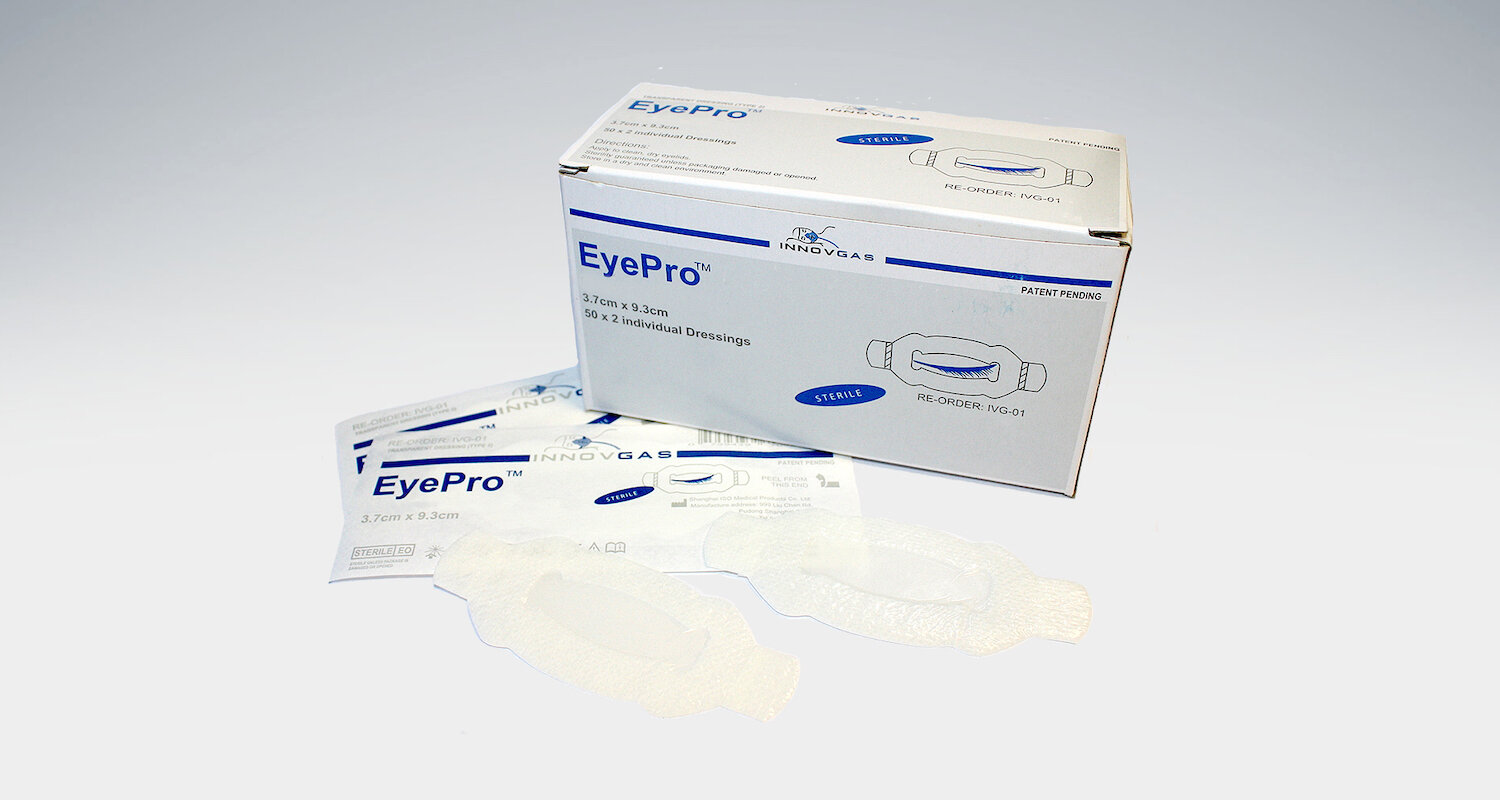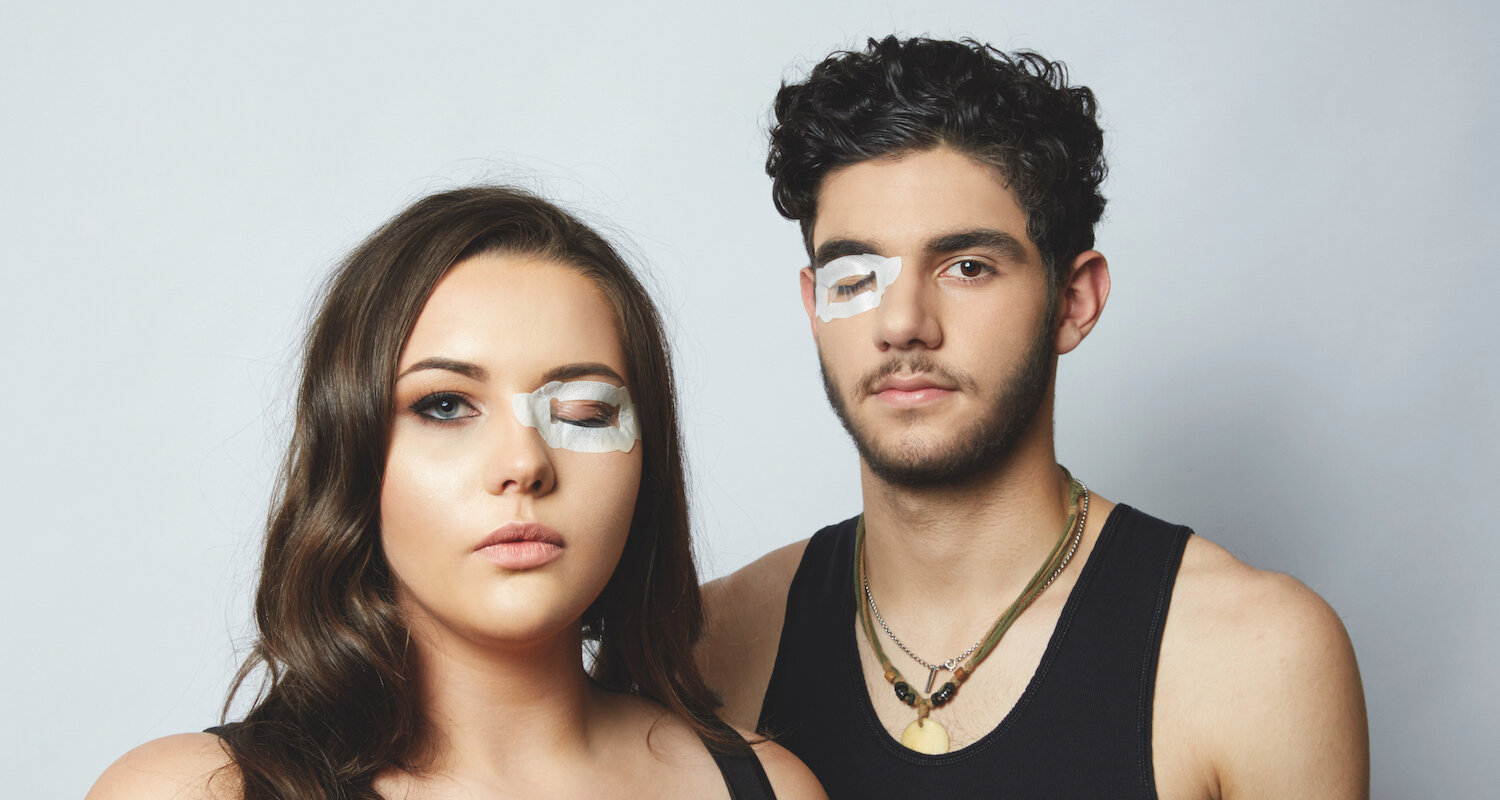EyePro | Eyelid Cover
About EyeProTM
The EyeProTM is a unique eyelid cover designed by an anaesthetist to maintain eyelid closure during general anaesthesia or deep sedation, eg. ICU. It ensures rapid, complete and safe eyelid closure. By sealing around the eye circumferentially, all moisture is retained, thus preventing the eye from ‘drying out’.
Key Features
- Sterile to combat spread of resistant hospital infections eg VRE/ MRSA
- Easy to apply and remove
- Decreases risk of corneal abrasions and exposure keratopathy
- Clear central window allows direct observation of eyelid closure
- Seals around eye to prevent moisture loss or eye soiling
- Saves theatre time and money.
Eye injuries account for 2-3% of legal claims against anaesthetists1 and operative eye protection is something that historically is done very poorly. By decreasing eye injuries and litigation rates, all practitioners, their hospitals and patients, will benefit. A simple preventative device can save valuable health dollars.
Is Eyelid Cover a waste of time?
About 60% of patients having a general anaesthetic will get lagophthalmos, or incomplete eyelid closure, as well as decreased tear secretion. As a direct consequence of this, they can develop exposure keratopathy; a condition in which the cornea dries out1. The symptoms of this can be severe pain, irritation, foreign body sensation, tearing and photophobia. Additionally, the cornea may adhere to the under surface of the eyelid, leading to a corneal abrasion upon eye opening.
Corneal abrasions in theatre may also result from direct trauma or pressure from surgical drapes, face masks, surgical instruments and anaesthetic circuits.
Many surgical antiseptic solutions such as Betadine or chlorhexidine/alcohol mixes may be very harmful to the eyes. When prepping the patient for surgery on the head, neck or upper body, there is a risk of soiling the eyes and causing a chemical injury4.
Cost and Time Efficiency
With its non-stick tabs the EyeProTM can be rapidly and easily applied even when wearing gloves. This is in direct contrast to medical tapes that can be difficult to handle, apply and remove.
Operating theatre time is money and each minute has an average cost of $662. Each use of the EyeProTM has been estimated to save 15-30 seconds when compared to using tape3. This equates to a cost saving of $16-$33 per case.
If there is an eye injury, the economic costs of diagnosis, management and increased length of hospital stay, may be considerable.
Problems with Current Methods
Current methods of eyelid closure do not give optimal protection. Ophthalmic lubricants or ointments do not protect against physical pressure or trauma and may cause blurred vision, irritation or corneal clouding.
Medical tapes can have variable adhesiveness. Too little stick may not ensure or maintain complete eyelid closure, leading to moisture loss from the eye. Too much stick may cause eyelid bruising, irritation and skin tears or eyelash loss on removal1.
Research shows that as many as 51% of partly used rolls of tape carry MRSA and/or VRE5. With a growing rate of hospital acquired infections and increasing antibiotic resistance, eliminating such a vector of transmission is an essential part of prevention.
EyeProTM Benefits and Advantages
- Each pair of EyePros comes packaged together in a sterile wrap to decrease the risk of cross contamination.
- Application and removal time are reduced.
- A patented dual zone design whereby an inner transparent window allows intra-operative assessment of eyelid closure, while an outer, more rigid, opaque zone allows for easy handling and excellent conformity to the eye socket.
- The inner window has a gentle adhesive which helps to maintain eyelid closure and reduces eyelid trauma and/or eyelash removal.
- The outer zone has slightly stronger adhesive that maintains eyelid closure for extended periods.
- None adhesive tabs allow for easy handling, application and removal, even while wearing gloves.
Updated Instructions for Use (IFU) November 2024 - multiple languages.
To find out more, download a brochure in the following languages or get in touch.
References:
Nair, PN & White, E 2014, ‘Care of the eye during anaesthesia and intensive care”, Anaesthesia and Intensive Care Medicine, vol. 15, no. 1, pp. 40-43.
Shippert, RD 2005, ‘A study of time-dependent operating room fees and how to save $100 000 by using time-saving products’, The American Journal of Cosmetic Surgery, vol. 22, no.1.
Wallis, A 2014, Unpublished data, Department of Anaesthesia, Calvary Hospital, TAS, Australia.
C Marcucci, NA Cohen, DG Metro & JR Kirsch 2008, Avoiding Common Anesthesia Errors, Lippincott Williams & Wilkins, Philadelphia PA USA
Harris PN et al. Adhesive tape in the health care setting: another high-risk fomite? Med J Aust. z2012;196(1):34


